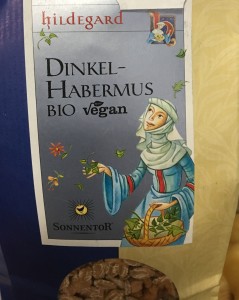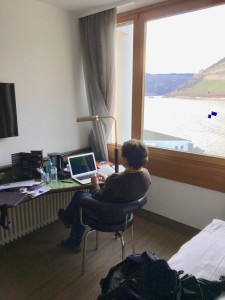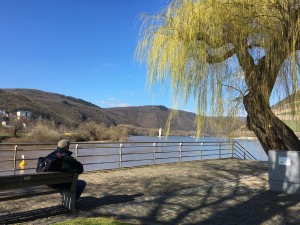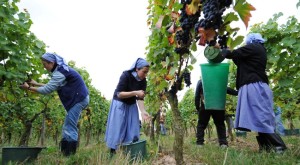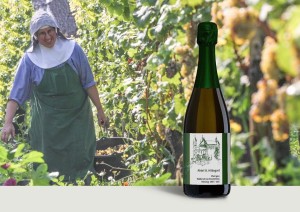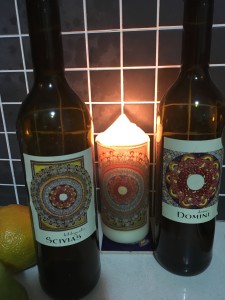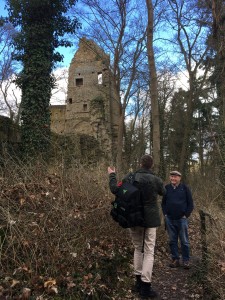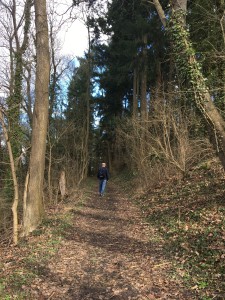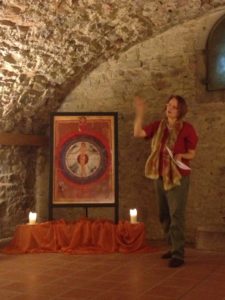
Annette Esser in September 2013 speaking to a group of pilgrims including myself.
Annette’s Book Review of Hildegard of Bingen: A Poetic Journey
What an oeuvre! I love this work. What a superb and elaborates work!
These nine books of poems by Australian poet Colleen Keating tell Hildegard‘s life story plus the ones of her intimates, especially Jutta, Volmar and Richardis in such a stunning way that the reader feels put into the landscape and ambience of the Hildegard’s Medieval cloister world and the most intimate feelings and sensations of her time in the 12th century.
The author presents here her work of 20 years of poetic search and thoughtful reflection.
Myself, having done research on Hildegard as well, since early 1990 in Germany and America, I have never encountered elsewhere such an amazing poetry on Hildegard’s whole life story that even seems to have a grasp on the German language, culture and nature.Self-evidently, the author follows new historical insights after the late translation of the “Life of Lady Jutta“, even though some of her story-telling is still in dispute in the Hildegard research (such as the place of her birth; the site of the Disibodenberg women‘s cell; the questions whether Hildegard also counts as the foundress of Eibingen; and the question whether the number of “four missionary journeys“ is rather a construct). Yet, as a spiritual Hildegard scholar, I wish to stress that fictional writing is sometimes not just more inspired but also more true than merely accounting historical facts.
Thus, I highly recommend reading, tasting and meditating on this poetic journey on Hildegard of Bingen. It is inspired by deep knowledge and wisdom. –
In short: I wish we could translate these poems from the other side of the earth also back into Hildegard‘s own German language. They belong to this world and they belong here.
Dr. Theol. Annette Esser, Foundress and President of the Scivias Institute for Art & Spirituality in Germany, Initiator of the new Hildegard Pilgrimage Way from Idar-Oberstein to Bingen, author of „Die Kirchenlehrerin Hildegard von Bingen“ and „Pilgerbuch Hildegard von Bingen Pilgerwanderweg“ (the Hildegard Pilgrimage Book)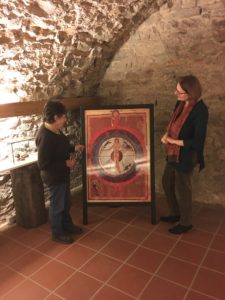
Colleen and Annette 4 years later in March 2017 on my third pilgrimage to Bingen.
Dr. Annette Esser Founder and President of the Scivias Institute for Arts and Spirituality , Germany met us and invited us to spend time in the room. speaks especially of the wonderful Trinitarian Mandala of Hildegard.
It was 27 years after Scivias her first book was began. This mandala is from LIBER DIVINORUM OPERUM – The Book of Divine Works (1163-1170)
Hildegard heard “ . . I, the fiery life of Divine essence am aflame beyond the beauty of the meadows. I gleam in the waters. I burn in the sun, moon and stars, With every breeze , as with invisible life that contains everything, I awaken everything to life “
Rupertsberg was a crag at the confluence of the Nahe and the Rhine, in Bingen am Rhein. It is named for Saint Rupert of Bingen, son of Bertha of Bingen. It is notable as the site of the first Abbey founded by Saint Hildegard of Bingen, in 1150, after leaving the monastery at Disibodenberg.
She acquired the land from Hermann, dean of Mainz, and Count Bernhard of Hildesheim, plus various smaller gifts. The convent chapel was consecrated by Archbishop Henry of Mainz in 1152.
Hildegard built a thriving community of women with gardens of healing plants and an Apothecary to prepare the herbs and plants for healing.
There is thought that she had up to 100 sisters living and studying and working there as a community
The ruins of the monastery were rediscovered in the work done to make way for a railway track in 1857.

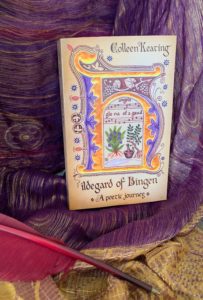
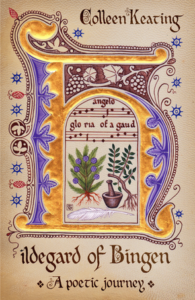
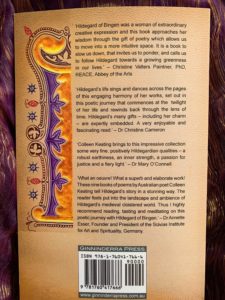




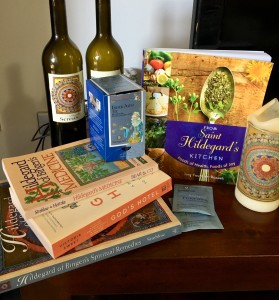

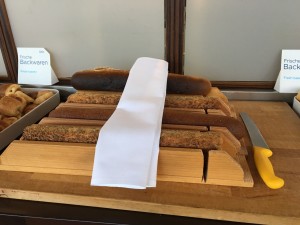 i
i